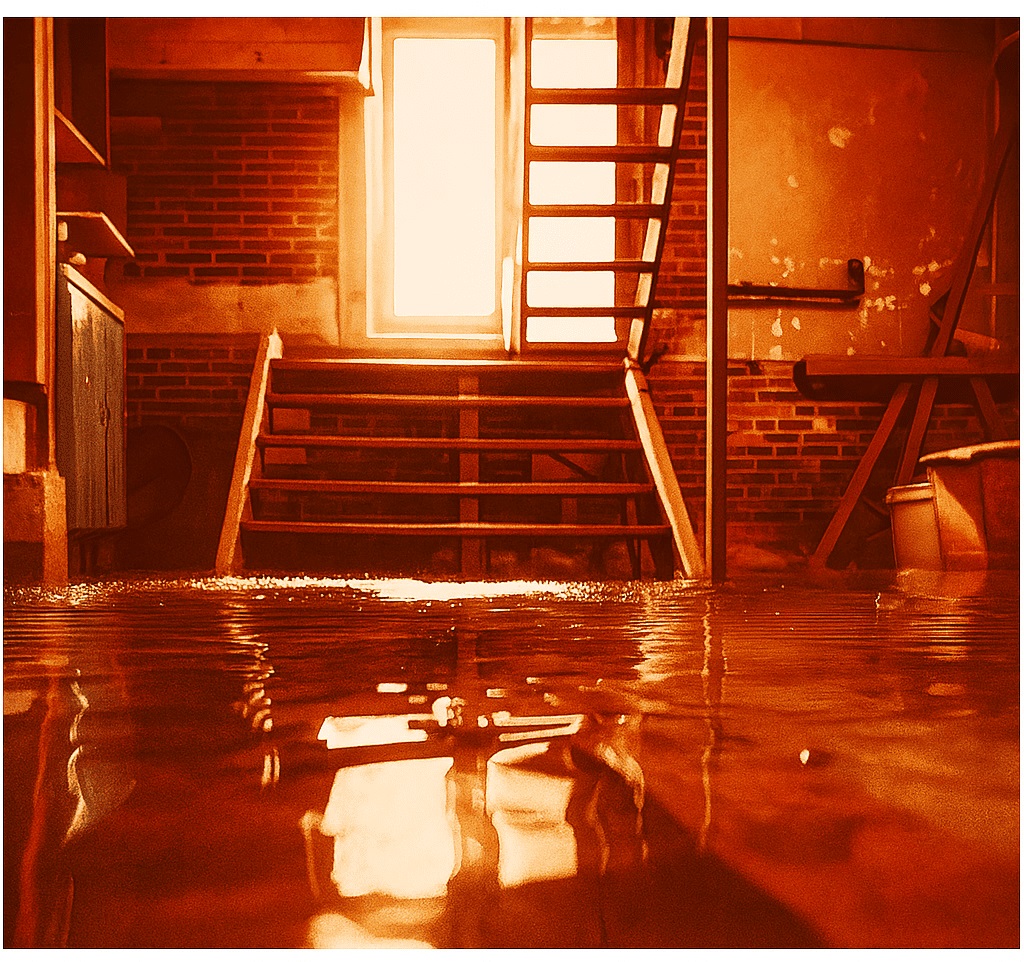Few things throw off your sense of home like stepping into a cold, ankle-deep basement. Whether it’s a surprise downpour, a burst pipe, or groundwater sneaking in, the shock is real—and the clock starts ticking. That’s why understanding emergency restoration services—and acting quickly—is so important.
Why Basement Flooding Happens:
Rapid storms can drop inches of rain in just a few hours. When that water is combined with sump pump failures, clogged gutters, broken pipes, or small foundation cracks, it creates the perfect recipe for flooding. What starts as “a little damp” can quickly turn into a full-blown emergency if water continues to seep inside—often requiring prompt water damage restoration and repair.
Recent Real-Life Example: Milwaukee’s “1,000-Year Flood”
In August 2025, the Milwaukee area was swamped by an extreme rain event—up to ~14 inches fell in less than a day, roads went under, the final day of the Wisconsin State Fair was canceled, and the fire department handled 600+ emergency incidents. Officials declared a state of emergency as neighborhoods pumped out basements and crews worked around the clock. AP News
Local sewer officials later reported more than 1,100 basement backup reports during the storm’s peak—proof of how fast water can overwhelm drainage systems. MMSD
(You’ll hear this called a “1,000-year flood,” which simply means a ~0.1% chance in any given year—not that it comes once every millennium.) Daily Reporter
Why acting fast really matters:
Even a thin layer of standing water can kick off mold growth within 24–48 hours, warp floors and drywall, and leave behind contaminated residues that aren’t safe to DIY away. Professional extraction, industrial drying, and targeted cleaning reduce long-term damage and help protect your foundation and air quality.

What to do right now if your basement floods:
First 10 minutes
- Stay safe. If you can reach the breaker box without stepping in water, switch power to the affected area off. If not, wait for an electrician or restoration pro.
- Stop the source. Turn off the main water if it’s a pipe; note where water is entering if it’s storm-related.
Next 60 minutes
- Document everything. Quick photos and short videos from different angles help with insurance.
- Call the pros. Reach out for emergency restoration services immediately.
Within 24 hours
- Protect what you can. Move light, dry items to a safe area. Don’t lift water-logged boxes or furniture that could break apart.
- Ventilate smartly. If outdoor humidity is low, crack windows; otherwise keep things closed and let dehumidifiers do the work.
- Start the claim. File early so adjusters can track progress alongside your restoration team.
Curious about exactly what goes into the restoration process? Dive deeper here: Water Damage Restoration.
Frequently Asked Questions About Basement Flooding:
Q1: Can I clean up a flooded basement myself?
Minor moisture issues can sometimes be handled independently, but significant flooding usually involves structural risks, contaminated water, and hidden moisture. It’s best handled by a professional water damage restoration and repair team.
Q2: How soon should I call for help?
Immediately. The first day sets the tone for drying times, mold prevention, and your overall repair cost.
Q3: Does homeowners insurance cover it?
Sudden, accidental events (like burst pipes) are often covered; flooding from outside water typically requires separate flood insurance. Check your policy’s definitions and exclusions.
Q4: How long will restoration take?
Minor events can resolve in a few days; complex losses—especially after severe storms—can take weeks due to drying, rebuilds, and claim steps.
Final Thoughts:
A flooded basement is scary—but you’re not stuck. Take a breath, follow the first-hour steps, and get a qualified water damage restoration team on site. Fast, professional help doesn’t just clean up the mess; it protects your home, your health, and your peace of mind. Having a trusted water damage restoration company on call isn’t just practical—it’s essential.


